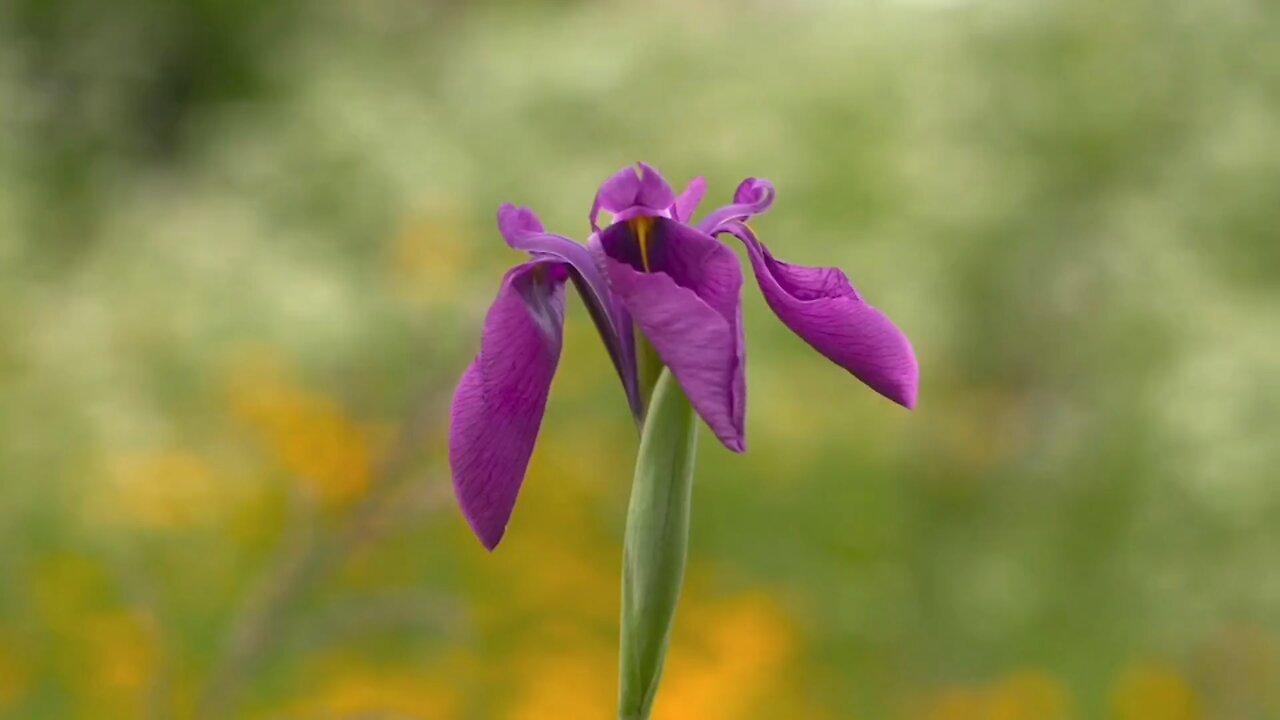Premium Only Content

"Stunning Blooms: Cultivating the Japanese Iris (Iris ensata var. ensata)"
**Iris ensata var. ensata** (Japanese iris) is a cultivar of the species *Iris ensata*, renowned for its ornamental beauty and distinctive characteristics. Here are the key details:
### **Appearance**
- **Flowers:** Large, showy blooms that are 4-6 inches in diameter. Colors range from deep purples and blues to white and bi-color combinations. The flowers often have intricate patterns and are held on tall, straight stems.
- **Leaves:** The foliage is long, narrow, and grass-like, forming a fan shape. Leaves can reach up to 2 feet in length and provide a lush, green backdrop to the blooms.
### **Growth and Size**
- **Height:** Typically grows between 2 to 3 feet tall.
- **Spread:** Can spread 1 to 2 feet wide.
- **Growth Habit:** Upright and clump-forming. It can be grown in groups for a more dramatic visual impact.
### **Blooming**
- **Season:** Blooms in late spring to early summer, usually from May to July, depending on the climate.
- **Duration:** Each flower lasts about a week, but the overall blooming period can span several weeks.
### **Cultivation**
- **Soil:** Prefers rich, moist, well-drained soil. It can tolerate slightly acidic to neutral pH levels.
- **Light:** Best in full sun to partial shade. In hotter climates, some afternoon shade can help protect the plant from intense sun.
- **Water:** Thrives in consistently moist soil, and is often grown in or near water features like ponds or streams. It can tolerate standing water but should not be waterlogged.
### **Care**
- **Fertilization:** Benefits from a balanced fertilizer applied in early spring as new growth begins.
- **Pruning:** Remove spent flowers to encourage additional blooming and prevent seed formation. Cut back foliage in late fall or early spring before new growth starts.
- **Dividing:** Divide clumps every 2-3 years to maintain vigor and prevent overcrowding. Best done in late summer or early fall after the blooming period.
### **Pests and Diseases**
- Generally resistant to pests but can be susceptible to fungal diseases like iris borer or root rot if conditions are too wet or if air circulation is poor.
### **Uses**
- **Gardens:** Ideal for water gardens, bogs, and as a border plant.
- **Arrangements:** The dramatic blooms make excellent cut flowers for floral arrangements.
The Japanese iris adds a touch of elegance and color to any garden, particularly those with water features.
-
 LIVE
LIVE
Lofi Girl
2 years agoSynthwave Radio 🌌 - beats to chill/game to
281 watching -
 2:07:47
2:07:47
LFA TV
16 hours agoTHE RUMBLE RUNDOWN LIVE @9AM EST
67.3K8 -
 2:20:46
2:20:46
I_Came_With_Fire_Podcast
11 hours agoThe Pattern Beneath the World: Nature, The Mark of the Beast, & the Sacred Order
18.5K21 -
![Mr & Mrs X - [DS] Antifa Are Planning An Insurrection,Trump Has Prepared The Counterinsurgency-EP 11](https://1a-1791.com/video/fwe2/6b/s8/1/k/3/R/p/k3Rpz.0kob-small-Mr-and-Mrs-X-DS-Antifa-Are-.jpg) 49:56
49:56
X22 Report
6 hours agoMr & Mrs X - [DS] Antifa Are Planning An Insurrection,Trump Has Prepared The Counterinsurgency-EP 11
52.1K52 -
 1:08:57
1:08:57
Wendy Bell Radio
10 hours agoPet Talk With The Pet Doc
50K27 -
 8:47
8:47
Demons Row
2 days ago $1.63 earnedI Spent $50,000 Building My Dream Harley-Davidson 😳💀 (Learn From My Mistakes)
43.9K10 -
 38:18
38:18
SouthernbelleReacts
23 hours ago $1.94 earnedThey Thought the Secret Was Buried… But I’m Screaming! | Reaction to I Know What You Did Last Summer
32.5K1 -
 29:37
29:37
Midwest Crime
1 day ago5 Cops Shot as Minnesota Raid Turns into Chaos
59.6K166 -
 31:08
31:08
mizery
17 days ago $0.58 earnedI Asked 100 Pros To Help Me Go Pro...
15.6K3 -
 7:03:56
7:03:56
FyrBorne
18 hours ago🔴Battlefield 6 Live M&K Gameplay: A Return to Form for This Former Giant
23.5K